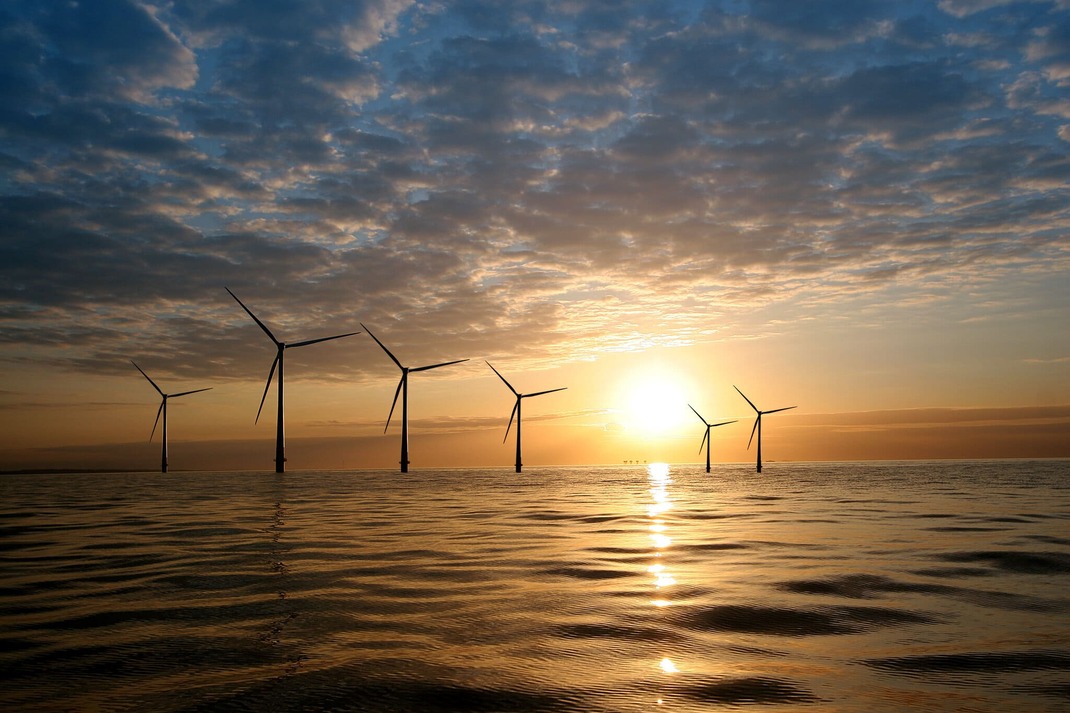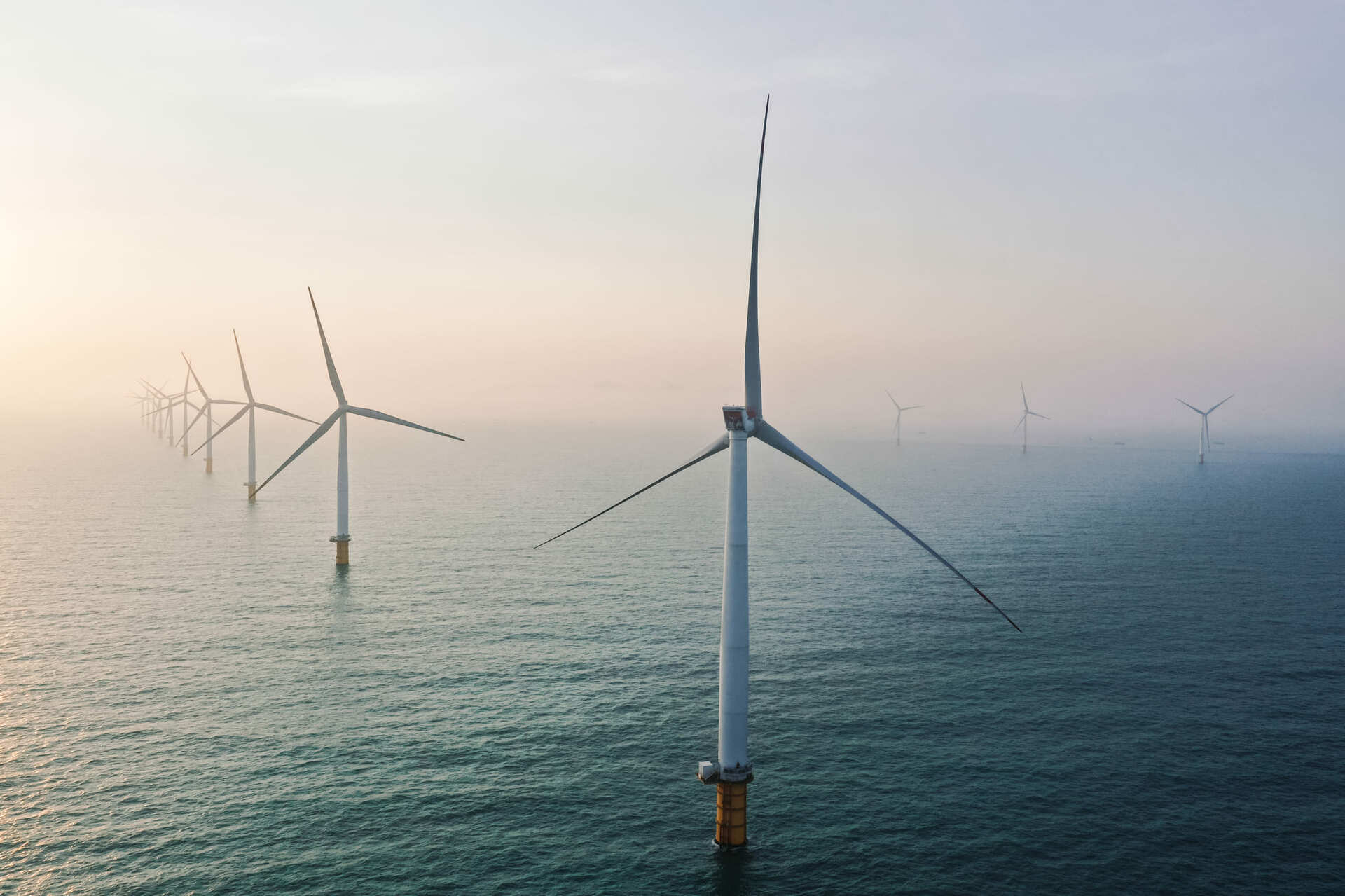The future of offshore wind: Facing challenges and accelerating progress
Discover how the UK’s offshore wind sector is evolving. Business Development Manager, Will Russell shares key insights, covering the latest policy changes, investment trends, and what’s next for the UK’s offshore wind sector.

The UK is a global leader in offshore wind, with over 15GW of installed capacity currently supplying more than 17% of the nation’s electricity. However, with an ambitious goal to expand its offshore wind capacity to 43–50GW by 2030, urgent and coordinated action is needed to meet offshore wind deployment targets.
The Global Offshore Wind 2025 conference offered a powerful snapshot of a rapidly evolving industry. From strategic investment to regulatory reform, the UK’s offshore wind sector is undergoing transformation at scale and speed, and I look forward to sharing key insights on how we can collectively accelerate progress in this critical sector.
£1 billion supply chain investment: A catalyst for growth
Energy Secretary Ed Miliband’s address set the tone for the conference, reinforcing the strategic importance of offshore wind with the announcement of a £1 billion funding package to strengthen the UK’s offshore wind supply chain. This includes:
- £400 million from The Crown Estate,
- £300 million from Great British Energy (GBE), and
- £300 million from private industry co-investment.
The aim of this investment is to unlock up to £17 in private capital for every £1 of public funding. It will be critical in addressing supply chain bottlenecks, supporting regional economies, and strengthening the UK’s position as a global leader in offshore wind.
Employment in the sector has already grown 24% in the past two years, now nearing 40,000 jobs, and the new investment guide and online portal aim to further drive supply chain growth.
Floating wind: An emerging focus
As the UK looks to expand our offshore wind capacity, floating offshore wind brings a whole new opportunity. On paper, the UK already has one of the largest floating project pipelines in the world, with a seabed already leased for up to 24GW of capacity, but in reality, only 3MW is expected online in 2025.
This is ultimately due to its difficult implementation, with some of the key challenges being supply chain immaturity, cost pressures, and policy uncertainty. However, Great British Energy are looking to drive development forward and is actively seeking co-investment opportunities in floating offshore wind projects. It plans to evolve into an owner-operator and is assembling a dedicated team for this purpose, though it is likely to be 2028 and beyond before they really make a big impact.
In the meantime, the Contract for Difference Allocation Round 7 (CfD AR7) will be pivotal, with up to 458.4MW of floating capacity potentially bidding, though concerns persist around affordability, investor confidence and delivery track records for floating offshore wind.
CfD Allocation Round 7: Reform and uncertainty
The CfD scheme remains critically important for driving investment in renewable energy, but it faces pressure to adapt. Industry leaders are calling for clear, stable auction parameters to ensure project viability and address persistent supply chain bottlenecks.
Public confidence also hangs in the balance. Consumers have been promised lower energy bills for some time but the sector has yet to strike the right balance between cost and price. If strike prices climb too high, public trust may falter, but if they remain too low, developers may walk away.
Much of the current uncertainty centres on two controversial issues: the possible inclusion of unconsented projects in Allocation Round 7 and a proposed move toward zonal pricing. Both are seen as potentially disruptive, and clarity is urgently needed.
The government has committed to finalising CfD parameters and publishing the outcomes of the Review of Electricity Market Arrangements (REMA) ahead of the upcoming auction, which will be crucial in restoring confidence and unlocking investment.
Financing the future: CfDs still lead
Despite the challenges, it is clear that the CfD scheme is remains the most bankable route to market in the eyes of investors, as they continue to demonstrate credibility and provide long term price certainty.
The recently introduced Clean Industry Bonus is a promising development, bringing in additional investment. However, it also introduces added complexity to project financing structures, something developers must now navigate carefully amid other challenges.
Developers are also calling for longer contract tenors, ideally up to 20 years, to improve project bankability and reduce exposure to volatile post-contract markets, as well as lower borrowing costs and improved grid and transmission infrastructure to help meet project delivery timelines.
Above all, the imminent decisions ahead of the auction will shape bidding strategies, capital flows, and overall project feasibility, and play a key role in determining whether the UK can achieve its ambitious 2030 offshore wind targets.
Unlocking the potential of offshore wind
CfD PPAs remain the most effective de-risking mechanism for offshore wind projects. However, Corporate Power Purchase Agreements (CPPAs) will also play an increasingly important role as an alternative option for project financing.
While the UK CPPA market is not yet large enough to support net zero targets alone, with ongoing innovation, coexistence between CfDs and CPPAs will be crucial to help deliver on the UK’s ambitions and diversify revenue streams.
Global Offshore Wind 2025 confirmed that this sector remains one of the UK’s most dynamic and strategically important industries. The investment is growing, and the political will is strong, but policy clarity and structural reform are urgently needed.
At this critical moment, stakeholders must work collaboratively to unlock the full potential of offshore wind. With smart reform, sustained investment, and strategic vision, the UK can maintain its global leadership and meet its clean energy goals.

Secure your route to market with a PPA
With long-term stability and financial backing from the Marubeni Corporation, and a wealth of experience in providing profitable and effective solutions across all technology types, we are a bankable CfD and Corporate PPA partner you can rely on to support your renewable energy project.


